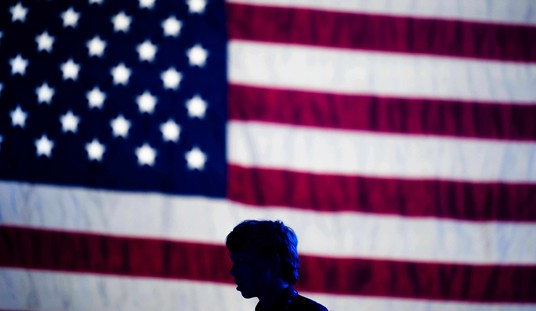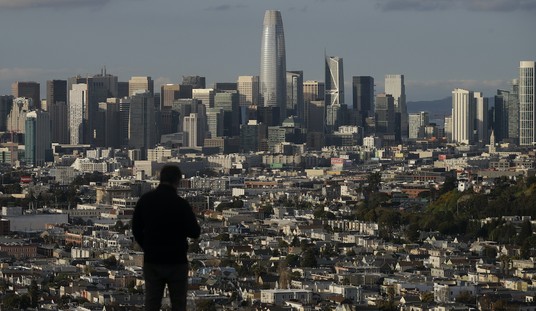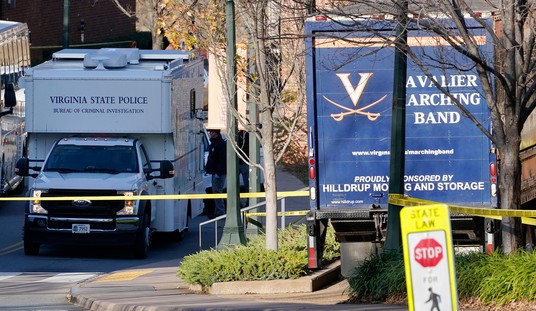I’ve been thinking about this since the news broke about Tom Brady signing with Tampa Bay. “Imagine Brady as a Buccaneer!”
Yeah. “Imagine” is the correct term.
He’ll turn 43 in August. Give me a good reason to think we’ll see him on the field before he turns 44. Would he even want to come back at age 44 after a year-long layoff?
Kirk Herbstreit is appropriately skeptical:
“I’ll be shocked if we have NFL football this fall, if we have college football. I’ll be so surprised if that happens,” Kirk said.
“Just because from what I understand, people that I listen to, you’re 12 to 18 months from a [coronavirus] vaccine. I don’t know how you let these guys go into locker rooms and let stadiums be filled up and how you can play ball. I just don’t know how you can do it with the optics of it.”
Kirk said if he was the NFL commish or in charge of the NCAA, he would shut it down ASAP — “Next thing you know you got a locker room full of guys that are sick. And that’s on your watch? I wouldn’t want to have that.”
“As much as I hate to say it, I think we’re scratching the surface of where this thing’s gonna go.”
The outbreak would have to end much sooner than September, Herbstreit went on to say, since guys need time to practice. The only scenario I can think of that might conceivably allow that is if the rosiest scenario of the Oxford model of the disease is proven empirically, with many more asymptomatic infections across the population than anyone realized. But even then, it’s not like the outbreak screeches to a halt once herd immunity is achieved. There’s a downward slope to the proverbial curve. An unlucky few numbering many thousands will continue to get severely ill. Who would want to take their chances in the stands at an NFL game when, say, an estimated one-third of the public still hadn’t acquired immunity from the disease?
If instead the empirical data shows that the Imperial College model of COVID-19 more accurately reflects how the virus spreads, forget it. There’ll be no mass gatherings of any sort, sports-related or otherwise, until a vaccine is available and in wide use. Conceivably you could play games before empty stands but a contact sport like football would risk infection on the field. Even if you figured out a way to avoid that (imagine linemen in N95 masks), you still have the problem of players in close quarters in the locker room. If so much as one guy were diagnosed positive, the whole team would have to self-quarantine. Presumably its last opponent, and possibly its last several opponents, would need to self-quarantine too. When do they make up those canceled games?
Maybe we’ll have an effective therapeutic drug like hydroxychloroquine or remdesivir available by summer. *If* there’s a drug out there that can be taken prophylactically to prevent infection, I suppose that’s a second scenario in which games might be played. But if there’s no prophylaxis, if the meds only work after someone’s fallen ill, you can’t play. You’d run into the same risk described above of guys infecting each other and having to self-quarantine or at least take a week or two off to recover.
So, no, there’ll almost certainly be no football this year. The better question is: Will there be football next year? If the timetable for a vaccine turns out to be more like 18 months than 12 months, it’s an open question. Even if the timetable is 12 months, there’s no way everything opens back up on the first day that the vaccine is available. It’ll take time for tens of millions of people to get the shot. Full normalcy won’t return until half the population or more has herd immunity.
Maybe that can happen before the 2021-22 season. I don’t know. But even if the NFL gets to play next year, it’s hard to see how the NBA and NHL will. They’ll have all the same problems as the NFL — close contact among players on the court/ice, on the bench, and in the locker room. And their next seasons are scheduled to start this fall, long before a vaccine will be ready.
Oxford study or bust. If this virus isn’t much less deadly than most scientists believe, we’re done with sports for the year, realistically. And possibly for most of next year too.
…Except maybe for baseball. That’s the one major sport in which players usually aren’t in close contact. Apart from slides and holding runners on, most guys on the field are rarely within six feet of each other. The first challenge would be to figure out a way to protect the batter, catcher, and umpire, all of whom are clustered together at the plate. Robot umps, which they’ve been toying with, could help solve the problem. Some sort of mouth and nose protection for the catcher might lower the risk enough to proceed. Major changes would need to be made to the dugout, the bullpen, and the locker room, though. Managers could manage the game remotely, from their offices in the stadium. Instead of dugouts, pens all the way up the lines in left and right field could be built to let players spread out when their team is at bat. Locker rooms would need to be rethought entirely. It would take some engineering.
But maybe MLB’s willing to do it. Imagine having the spotlight all to itself at a moment when the entire country is starving for professional sports.
* The caveat agreed to by the players and league is that they will consider playing games at neutral sites instead of home ballparks — and will consider the feasibility of playing in empty stadiums and just how proper a solution it may be for both sides and especially fans.
— Jeff Passan (@JeffPassan) March 27, 2020
I’m not sure they’ll get around the “games pose no health risk” bit. Until there’s a vaccine, every game will pose a health risk. And we’d still run into the problem of entire teams potentially having to quarantine for two weeks if one player got sick.
If you want to get really radical in solving that problem…
So put all the baseball teams in a large luxury resort or two near a stadium, and just have them all live there for the season and play at the same stadium. It's not like they have to worry about taking the kids out of school, and the resort can't sell their rooms anyway.
— Megan McArdle (@asymmetricinfo) March 24, 2020
Logistically you couldn’t do it all at one stadium, obviously. There aren’t enough hours in the day to have 30 teams play 15 games in the same place. What you could do is send the teams from each division (or two divisions) to the same city, quarantine them together, and have them play double-, triple-, or quadruple-headers every day in the same stadium, as the case may be. It’d get boring watching the same match-ups but it’s better than nothing. Short of that, I don’t know what the options are.
There’s one more out-of-the-box possibility that might solve the problem: Antibody therapy. Right now scientists are clamoring for people who’ve survived coronavirus to donate blood so that they can isolate the antibodies in their plasma that fought off the virus and inject them into critical patients and front-line health-care workers. That’ll provide the recipients with some temporary immunity, or near-immunity, from infection. We could make pro athletes eligible for that treatment and reinject them as needed when the antibodies wear off to keep their immunity up. That would allow games to be played with minimal risk of infection. But if we do that, we’d have to explain why LeBron James is more worthy of a dose of antibodies than a nurse who’s working a 24-hour shift in some overcrowded ER somewhere. There’s already been a minor public uproar over the fact that the Utah Jazz managed to obtain dozens of COVID-19 tests after Rudy Gobert was infected at a moment when average joes sick with fever were being driven mad by the hoops they were forced to jump through to get the same test. Do we want to spend precious antibody treatments on Tom Brady?








Join the conversation as a VIP Member